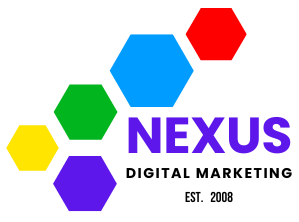The Missing Millions: How Utah Business Owners Over 40 Are Surrendering Market Share In The Digital Gold Rush
Meta Description: Discover the untapped digital opportunities that established Utah business owners are overlooking and how embracing strategic digital marketing could unlock substantial growth for your business in today’s competitive landscape.
The Generational Digital Divide Costing Utah Businesses Millions
Jeff Thompson built his Salt Lake City manufacturing company from scratch 22 years ago. With steady 3-4% annual growth and a loyal customer base, he considered his business successful. That is, until a newer competitor—founded just five years ago—surpassed his annual revenue by 27% last quarter. The difference? Not product quality or pricing. The upstart simply dominated the digital channels Jeff had been dismissing as “not where my customers are.”
Jeff isn’t alone. Across Utah’s business landscape, a quiet crisis is unfolding. While the state enjoys one of the nation’s most robust economies and a reputation as the “Silicon Slopes,” a striking divide exists between digitally-integrated businesses and those still relying primarily on traditional operations and marketing approaches. This divide falls largely—though not exclusively—along generational lines.
Recent data from the Utah Department of Commerce reveals a troubling trend: businesses with leadership over 40 years old invest, on average, just 12% of their marketing budget in digital channels—despite these channels delivering 61% of consumer engagement across industries. This disconnection between investment and opportunity represents millions in forfeited revenue across the Beehive State.
The dilemma becomes even more pronounced when examining the startling growth gap. Utah businesses implementing comprehensive digital strategies grew 5.3x faster during the past three years than those maintaining traditional approaches—even during economic uncertainty. This isn’t merely about having a website or Facebook page; it’s about strategic digital integration that many established business owners have either deprioritized or misunderstood.
The Digital Adoption Gap Hiding in Plain Sight
The problem extends beyond simply having a digital presence. According to the Salt Lake Chamber of Commerce’s 2023 Digital Readiness Survey, 78% of Utah businesses led by owners over 40 report having a website, yet only 23% have implemented data-driven marketing strategies that effectively convert online visitors into customers. Even more concerning, just 17% utilize their existing customer data to inform business decisions—a missed opportunity of staggering proportions.
Dr. Eliza Martinez, Director of Business Economics at the University of Utah, explains the phenomenon: “We’re seeing established Utah business owners excel at traditional business fundamentals—quality service, operational efficiency, community connections—while simultaneously undervaluing the transformative power of digital systems that could amplify these same strengths. It’s not about abandoning what works, but about enhancing it through strategic digital adoption.”
This digital hesitation extends beyond marketing. While 84% of businesses report using some form of digital tools for accounting or operations, only 29% have implemented integrated systems that provide actionable insights across departments. The result? Siloed information, duplicated efforts, and inability to identify critical business opportunities hidden in plain sight.
For business owners who built successful enterprises before the digital revolution, the landscape may seem unnecessarily complex or even intimidating. Many report feeling that digital marketing involves “moving targets” or requires “constant attention” they cannot provide. Others express skepticism about measurable returns or concerns about preserving their brand’s traditional values within digital environments.
The True Cost of Digital Hesitation
The consequences of this digital adoption gap are becoming increasingly severe as consumer behavior continues its dramatic shift toward digital-first engagement. A recent study by the Utah Technology Council found that 76% of consumers now research local businesses online before making purchasing decisions—even for traditionally “offline” services like plumbing, financial consulting, or manufacturing.
Consider the experience of Mountain West Equipment, a 30-year-old industrial equipment provider in Ogden. Despite strong word-of-mouth and industry connections, their sales plateaued in 2019. Meanwhile, a five-year-old competitor captured 23% market share by implementing targeted digital marketing, an intuitive online ordering system, and data-driven inventory management. The competitor’s growth wasn’t fueled by superior products but by superior accessibility and customer experience in digital channels.
The financial implications are sobering. The Utah Governor’s Office of Economic Development estimates that businesses failing to adapt to digital expectations forfeit between 18-24% of potential revenue annually. Across Utah’s economy, this represents billions in unrealized growth—particularly troubling in a state known for its entrepreneurial spirit and innovation.
Even more concerning is the compounding nature of digital disadvantage. As digitally-savvy competitors build data assets, consumer relationships, and algorithmic advantages, the difficulty of catching up increases exponentially. What might have required modest investment three years ago now demands significant resources—with each passing quarter widening the competitive gap.
Why Established Business Knowledge Is Actually Your Digital Advantage
The irony in this digital divide is that established business owners possess the very expertise that creates exceptional digital success when properly leveraged. Your decades of customer insights, industry knowledge, and operational understanding represent the critical foundation that many digital-first companies lack entirely.
Sarah Jensen, founder of Nexus DMS, a digital marketing strategy firm specializing in helping established Utah businesses, explains: “The most successful digital transformations we’ve led weren’t with tech startups, but with established businesses who combined their deep market knowledge with strategic digital systems. Their advantage wasn’t technical expertise—it was their profound understanding of customer needs, industry patterns, and business fundamentals.”
This perspective reverses the common narrative that experienced business owners are at a disadvantage in digital environments. In reality, they possess the most valuable asset in effective digital strategy: authentic business intelligence that cannot be easily replicated by competitors regardless of their technical proficiency.
The Utah businesses seeing the most dramatic growth are those leveraging this hybrid approach—combining established business wisdom with strategic digital systems. These companies aren’t abandoning their core values or completely overhauling operations; they’re strategically amplifying existing strengths through targeted digital enhancements.
Consider Heritage Manufacturing, a third-generation family business in Provo that saw 118% growth over 18 months after implementing a digital strategy that captured the specialized knowledge of their veteran staff through video content, created data-driven systems to identify their most profitable customer segments, and developed targeted marketing that highlighted their craftsmanship quality—a core value since 1968. Their success came not from digital wizardry but from translating existing business excellence into digital channels.
The Specific Digital Opportunities Utah Business Owners Are Missing
While the digital landscape is vast, certain high-impact opportunities consistently deliver exceptional results for established Utah businesses. Understanding these specific opportunities—rather than attempting to implement every digital possibility—provides a focused pathway for businesses ready to bridge the digital divide.
The first critical opportunity involves transforming existing customer relationships into powerful digital assets. Utah businesses with leadership over 40 generally excel at personal relationships but often fail to develop systems that scale these connections. Implementing strategic customer data platforms allows businesses to maintain personalized service while dramatically expanding reach. For example, Wasatch Financial advisors increased client acquisition by 41% by implementing a system that identified existing client patterns and created targeted outreach to similar prospects—without sacrificing their high-touch approach.
The second opportunity centers on leveraging local business authority into digital authority. Established Utah businesses often have strong community recognition that remains untranslated into online environments. Strategic content development that captures this expertise consistently generates significant visibility. When Mountain West Dental implemented a content strategy highlighting their 25 years of specialized experience, they saw a 67% increase in qualified leads and dramatically reduced their traditional advertising spend while expanding market reach.
The third critical opportunity involves modernizing operational systems without disrupting core business functions. Many established businesses avoid digital transformation fearing operational disruption, yet phased implementation of integrated systems typically yields 22-34% efficiency improvements while reducing costs. Utah Construction Specialties increased project capacity by 28% without additional hiring by implementing digital project management tools that eliminated communication bottlenecks and improved resource allocation.
Finally, established businesses consistently underutilize the power of strategic digital advertising. Many report previous disappointment with digital advertising, but this typically stems from tactical rather than strategic implementation. When properly aligned with business objectives and target demographics, digital advertising delivers average returns 4.7x higher than traditional channels for Utah businesses—with substantially improved measurement capabilities.
Why Technical Complexity Is No Longer a Barrier
One persistent concern among established business owners involves the perceived technical complexity of digital systems. Many report previous negative experiences with digital initiatives that became time-consuming or required specialized knowledge their team lacked. This concern, while understandable, has become increasingly outdated as digital systems evolve.
Modern digital platforms have dramatically reduced implementation complexity through intuitive interfaces, simplified workflows, and strategic partnerships that eliminate the need for in-house technical expertise. The most successful digital transformations don’t involve business owners becoming technical experts—they leverage strategic guidance while maintaining focus on core business leadership.
Robert Chen, Director of Small Business Development at Weber State University, observes: “We’ve seen a fundamental shift in digital implementation approaches. Five years ago, business owners needed significant technical involvement. Today’s systems allow business leaders to make strategic decisions while implementation partners handle technical aspects. The barrier isn’t technical anymore—it’s strategic.”
This shift means established business owners can focus on what they do best—setting vision, maintaining quality, and developing customer relationships—while strategic partners translate these priorities into effective digital systems. The days of business owners needing to become technical experts are effectively over, removed by mature implementation processes specifically designed for non-technical leadership.
The Proven Path Forward: How Leading Utah Businesses Are Bridging The Digital Divide
Utah businesses successfully navigating this transition typically follow a similar pattern that prioritizes strategic clarity over technical complexity. This approach begins with assessment rather than implementation—understanding current digital positioning relative to business objectives and competitive landscape.
This assessment phase proves critical because it prevents the common pitfall of implementing digital tools without clear business alignment. Successful transformations consistently begin by identifying specific business objectives—whether increasing qualified leads, improving operational efficiency, or enhancing customer retention—then mapping digital strategies specifically to these priorities.
After assessment, successful implementations focus on core foundation elements rather than attempting comprehensive transformation. This typically includes developing a conversion-optimized digital presence, implementing basic data collection systems, and establishing initial digital marketing channels aligned with customer behavior. This foundation-first approach delivers early results while establishing infrastructure for ongoing advancement.
The implementation pattern then shifts to iterative improvement rather than massive overhaul—using performance data to refine approaches, expand successful channels, and systematically address gaps. This measured methodology typically delivers 2.7x better ROI than comprehensive transformations while minimizing business disruption.
Wasatch Medical Supply demonstrates this approach in action. Rather than attempting to completely transform their operations, they began with a focused goal of increasing qualified leads for their highest-margin product lines. Their implementation started with modernizing their digital presence to effectively communicate their 30 years of specialized experience, then adding targeted advertising to reach their ideal customer profile. After establishing this foundation, they systematically expanded into additional digital capabilities—each tied to specific business objectives rather than technology for its own sake.
The results proved compelling: 104% growth in qualified leads, 37% reduction in cost-per-acquisition, and 22% improvement in average transaction value—all without disrupting their core operations or requiring technical expertise from leadership. Their digital transformation enhanced rather than replaced their established business strengths.
The Partner Approach: Strategic Implementation Without Technical Burden
For established business owners considering this transition, the partner model has emerged as the most effective implementation approach. This model maintains strategic control within business leadership while delegating technical implementation to specialized partners with proven experience guiding similar businesses through digital transformation.
This approach differs fundamentally from traditional agency relationships by emphasizing knowledge transfer and strategic alignment rather than dependency. Effective digital partners don’t simply implement technologies; they develop business capabilities, train internal teams, and establish sustainable systems that become business assets rather than ongoing expenses.
Nexus DMS has pioneered this approach specifically for established Utah businesses, developing a methodology that combines strategic guidance with implementation support. “We’ve found established business owners don’t need technical training—they need strategic clarity about which digital opportunities align with their business objectives, then implementation support that respects their time constraints,” explains Jensen.
This partnership approach typically involves phased implementation that delivers results within 90 days while establishing foundations for long-term growth. The methodology focuses on leveraging existing business strengths rather than imposing standardized digital tactics—resulting in digital systems that authentically represent established business values.
Timing Matters: The Closing Window of Digital Opportunity
While the opportunity remains substantial, market data indicates a narrowing implementation window as digital adoption accelerates across Utah’s business landscape. The Utah Technology Council’s competitive analysis suggests businesses implementing strategic digital systems within the next 12-18 months maintain significant competitive advantage potential, while those delaying beyond this period face substantially higher implementation costs and compressed advantage periods.
This narrowing window stems from several converging factors. First, consumer expectations continue shifting toward digital-first interactions across all industries. Second, algorithm-based platforms increasingly reward established digital presence, creating compounding advantages for early adopters. Finally, implementation costs rise as competitive pressure increases demand for digital expertise.
For established Utah business owners, this represents both challenge and opportunity. Those who strategically bridge the digital divide now position themselves for substantial growth during the coming economic cycle, while those delaying implementation risk finding themselves at permanent competitive disadvantage regardless of their operational excellence in traditional areas.
The Next Step: Actionable Assessment Without Commitment
Understanding your business’s specific digital opportunity requires personalized assessment rather than generalized prescriptions. This assessment process identifies your unique advantages, evaluates your current digital positioning, and maps potential opportunities against implementation requirements.
Established Utah business owners can request a confidential Digital Opportunity Assessment from Nexus DMS without obligation. This assessment provides actionable insights regarding your specific market position, competitive landscape, and highest-impact opportunities based on your business objectives.
The assessment process requires minimal time investment while delivering specific, measurable insights you can use regardless of implementation decisions. Business owners typically receive their personalized assessment within 10 business days, including competitive analysis, opportunity prioritization, and implementation considerations specific to their industry and business maturity.
This assessment represents the critical first step in determining whether digital transformation represents a meaningful opportunity for your specific business circumstances—providing clarity without commitment or technical complexity.
Conclusion: Translating Business Excellence Into Digital Advantage
The digital opportunity for established Utah business owners isn’t about abandoning proven business approaches or surrendering to technological trends. It’s about strategically extending your existing business excellence into digital environments where increasing numbers of customers make purchasing decisions.
Your decades of business experience represent your greatest advantage in this transition—providing the authentic market knowledge that creates meaningful digital differentiation. The businesses seeing the greatest success aren’t digital experts; they’re established business leaders who’ve strategically extended their fundamental strengths through digital channels.
The choice facing Utah’s established business owners isn’t whether digital capabilities matter—market data has definitively answered that question. The real choice involves how and when to implement these capabilities in ways that authenticate rather than compromise your established business values.
For those ready to explore their specific digital opportunities, the Digital Opportunity Assessment provides the clarifying first step—identifying your unique advantages and specific implementation priorities without technical complexity or significant time investment.
Request your confidential assessment today by contacting Nexus DMS at (743) 330-6700 or visiting nexusdms.com to begin transforming your established business excellence into digital market leadership.








